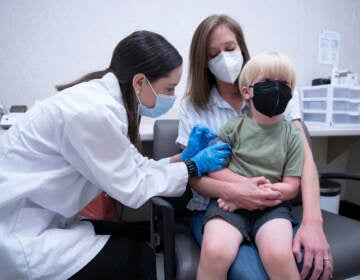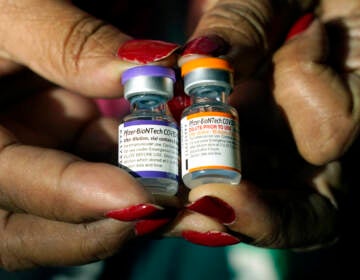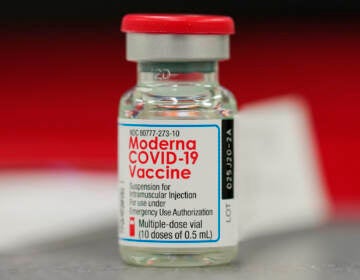When can babies and kids under age 5 get their shots? Here’s the timeline

Kids under 5 may soon be able to get the Pfizer vaccine, if regulators decide the shots are safe and effective for this age group. (Robyn Beck/AFP via Getty Images)
Babies as young as 6 months old could be able to get a COVID-19 vaccine in the U.S. within a few weeks, if regulators agree the vaccines are safe and effective for this age group.
On Tuesday, Pfizer and BioNTech took the first big step that could lead to its COVID-19 shots actually becoming available to kids when they submitted their clinical trial data to the Food and Drug Administration for its review. There are several regulatory steps to come, but things could move quickly from here. For context, the process with 5- to 11-year-olds last fall took just over four weeks.
Here’s what has to happen before little ones under 5 years old can start getting vaccinated against COVID-19.
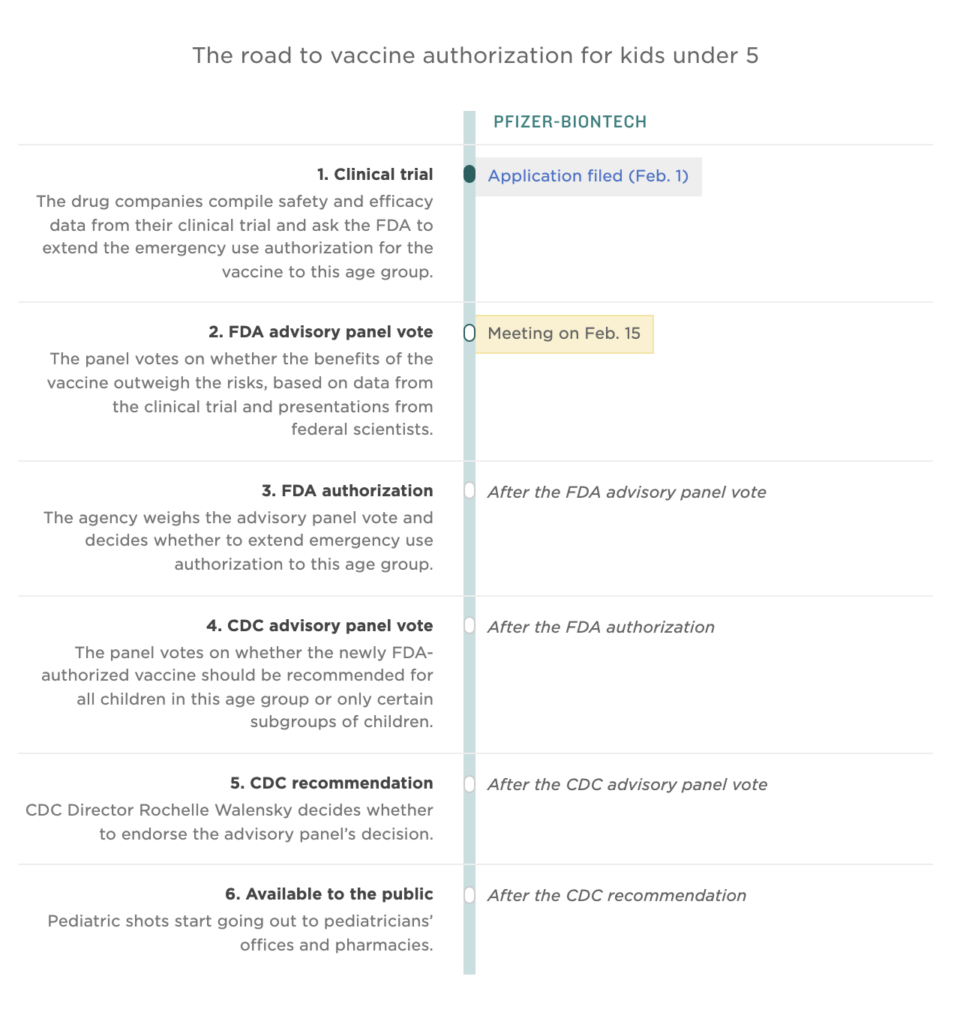
It remains to be seen if parents will be eager to embrace the shots if they’re authorized. According to a poll published Tuesday by the Kaiser Family Foundation, more than two-thirds of parents of children in this age group say they’ll wait and see about vaccination, or are “definitely” not planning to vaccinate their kids. Nearly one-third of parents say they’ll vaccinate their babies and young children right away.
Currently, Pfizer is the furthest along in the process toward authorization, but Moderna is also testing its vaccine with this age group – the company plans to submit data to FDA on 2- to 5-year-olds in March. Johnson & Johnson is expected to conduct vaccine trials for young kids in the future as well.
Here are more details on what each step of the regulatory process entails and how it is going for the Pfizer vaccine.
Step 1: Drugmakers conduct clinical trials and submit data to FDA
Pfizer and BioNTech have done a three-phase clinical trial in children 6 months through 4 years old. The companies announced in December that efficacy of the two-dose series for children older than age 2 but under 5 was disappointing, and many public health experts and parents assumed this meant many more months of waiting.
But in an unusual move, the companies decided to pursue applying for authorization as they continue to study the vaccine because of the “urgent public health need,” Pfizer-BioNTech said in a news release.
On February 1, the companies began to submit data on the safety and efficacy of two doses of the vaccine in this age group – describing them as “part of a three-dose primary series” — in an application for emergency use authorization to the Food and Drug Administration. Data on the third dose, given at least eight weeks after the second, is still being collected and analyzed.
The pediatric clinical trial for this vaccine includes a total of approximately 8,300 children from 6 months to 12 years old. In the youngest age groups, the vaccine is given as a series of three shots – the second is 21 days after the first, and the third is eight weeks after that.
Kids’ dosage is smaller than for adults: the dose for littles is 3 micrograms, a much smaller dose than the 30 microgram dose given to adults and teenagers. For children aged 5-11, the dose is 10 micrograms.
Pfizer has yet to publicly release detailed safety and efficacy data for children in this youngest age group.
Step 2: Independent scientists review the data
On Feb 15, a panel of outside scientists will consider Pfizer’s safety and efficacy data, along with an analysis from FDA scientists on the risks and benefits of the vaccine in different pandemic scenarios.
After presentations and discussion, the group of advisers will vote on whether the benefits of the Pfizer vaccine outweigh the risks for use in this age group.
Step 3: FDA officials weigh in
Next, the FDA — the agency itself — will consider the advisers’ vote on Pfizer’s smallest-dose shot for the littlest kids.
Then FDA officials will decide whether or not to extend the emergency use authorization for Pfizer’s COVID-19 vaccine to this youngest age group.
Step 4: More independent scientists debate and vote
But wait, there’s more. Yet another federal health agency and its advisers have to weigh in before the shots can become available — this time, it’s the Centers for Disease Control and Prevention.
You can think of it like this: When it comes to vaccines, the FDA is in charge of the what, and the CDC is in charge of the who.
The CDC’s vaccine advisory group will meet soon after the FDA has completed its evaluation. After more presentations and more discussion, the group of CDC advisers will vote to recommend the vaccine for all children in the 6 month to 5 year age group, or it could also recommending limiting it to a subset of that age group (for example, children with underlying conditions or those who haven’t had a prior coronavirus infection).
Step 5: CDC director makes final recommendation
The vote from CDC’s advisers isn’t an official recommendation — that comes from the CDC’s director, Dr. Rochelle Walensky.
She needs to greenlight the advisers’ recommendation. She can change the recommendation from what the committee voted on — as she did with boosters — but she usually follows their lead.
Only after the CDC director issues an official recommendation can shots get distributed to pediatricians and pharmacies around the country.
Step 6: Doses get distributed to providers and pharmacies
After an initial crunch when vaccines for 5- to 11-year-old kids were first approved, shots soon became widely available. Since many pediatricians’ offices have had months of practice administering Pfizer’s COVID-19 vaccines to older kids, it’s likely that the rollout for little kids and babies will go smoothly.
Experts suggest looking out for guidance from your child’s pediatrician and school about where shots will be available and when. Parents should also be able to find pharmacies with these low-dose pediatric COVID-19 shots in stock at vaccines.gov, a CDC website that helps people who want COVID-19 vaccines figure out where to go.
9(MDAzMzI1ODY3MDEyMzkzOTE3NjIxNDg3MQ001))


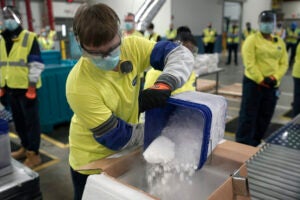
![CoronavirusPandemic_1024x512[1]](https://whyy.org/wp-content/uploads/2020/03/CoronavirusPandemic_1024x5121-300x150.jpg)
